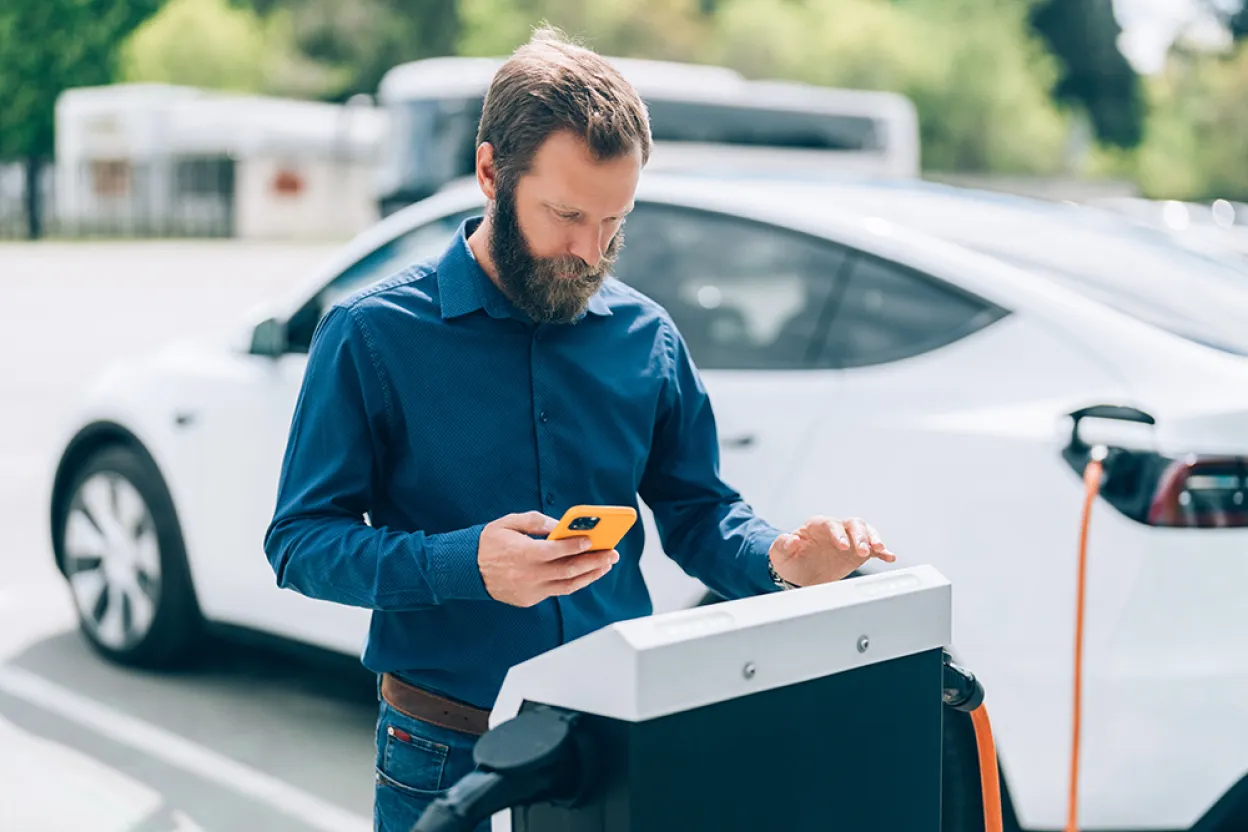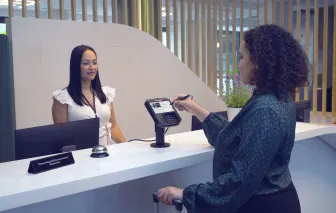The best EV charging station experiences will include payment choice
The demand for electric vehicle (EV) charging stations is about to skyrocket. PwC analysts predict that the number of electric vehicles in the U.S. will grow to 27 million in 2030, accounting for about 30 percent of vehicles on the road. Furthermore, the EV charging market, which received a $7.5 billion boost from the 2021 Infrastructure Investment and Jobs Act to create a national network of EV charging stations, is expected to grow along with EV sales. PwC predicts 7 million new publicly available charge points by 2030, one charging station for approximately every 4 EVs.
But the industry hasn’t yet settled on what those charging stations will look like. Automakers are weighing the pros and cons of standardizing charging across the industry, solutions providers are homing in on the public charging station design for optimal experiences, and everyone is trying to do it profitably. But one certainty has emerged: EV charging stations need to accept payments.
Why Unattended Payments Are Necessary for EV Charging Stations
Early EV charging station payment methods focused on apps. Apps like PlugShare, EVgo, ChargePoint, ChargeHub, EV Connect, and Chargeway, give drivers a way to find charging stations that are compatible with their vehicles and their needs. Furthermore, they can choose from subscriptions or pay-as-you-go plans and apps that offer loyalty rewards.
However, there are issues inherent in requiring all EV drivers to use an app to pay for charging. First, it’s possible that some drivers are less than tech-savvy or don’t have smartphones capable of downloading the latest app version. With regulations beginning to establish deadlines for the transition to electric vehicle sales, it’s naïve to think that only people carrying the latest technology will purchase EVs. Other drivers may prefer to use a credit card to pay for the charge.
Imagine a scenario in which you needed an app for every parking lot for urban dwellers or the need to download an app to park somewhere you visit infrequently. Application fatigue is real…What Is App Fatigue? App fatigue is a state of burnout that people experience due to growing number of mobile apps. And if you think App Fatigue is not a thing, think again. As of the second quarter of 2021, App Store and Google Play Store have over 5.7 million apps combined.
Another scenario is a driver who rents a car but doesn’t have an app that works with that automaker’s EV charging infrastructure. Requiring that driver to download and set up an app for a weekend excursion will probably be detrimental to the experience and may even influence where the driver rents vehicles in the future.
Consider one more possibility: The driver’s smartphone won’t charge. Maybe the charger failed – or the cable is on a nightstand in a hotel room. The driver has a contactless credit card and would be grateful to be able to use it when there are only a few miles left before charging.
Also, keep in mind that regulation will catch up with technology. The inability to charge an electric vehicle when needed can pose a safety hazard. Regulators will not permit EV charging infrastructure to create barriers to efficient charging processes or to whom charging stations can serve. The vision will be EV charging infrastructure that allows any motorists to charge any car and get safely on their way.
Stay Practical About EV Charging Payment Experiences
Solutions providers working in other consumer-facing industries, such as retail, grocery, and hospitality, understand the importance of providing the payment experiences that consumers want. As such, the focus may be on brand interfaces and sleek, aesthetic hardware to create distinctive solutions.
But the optimal payment experience on the road is likely to be different. Consumers want to know the EV charging station will work reliably, efficiently, and securely. The look and feel of the station will always be secondary to the primary goal of easily and efficiently charging the vehicle. Therefore, payment should also be as easy as possible, whether the driver prefers paying via app, credit card, QR code, or another method.
There’s more to hash out with EV charging infrastructure and EV charging station design, but one point is settled: EV charging station payment functionality is now part of the landscape and should be on all stakeholders’ roadmaps.
Ingenico is ready to provide you with information on how to add unattended payments to an EV charging station design that’s reliable and secure – and even aesthetic. Contact us now.











